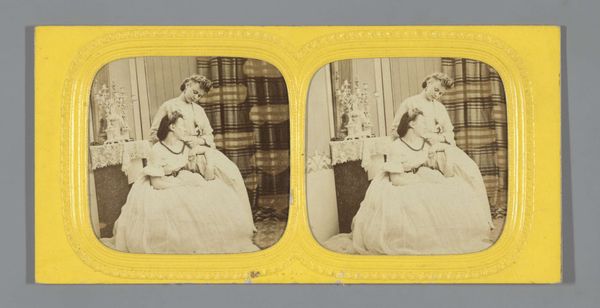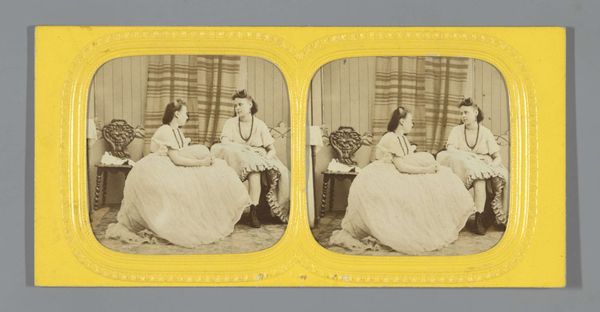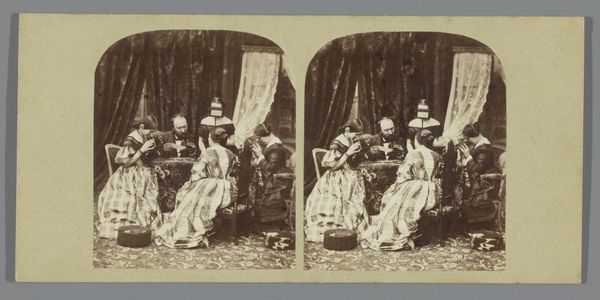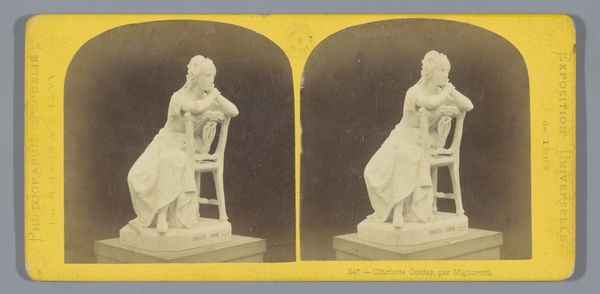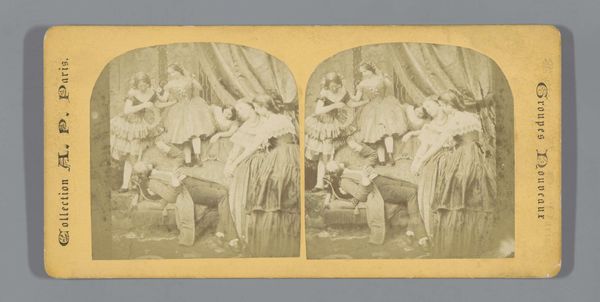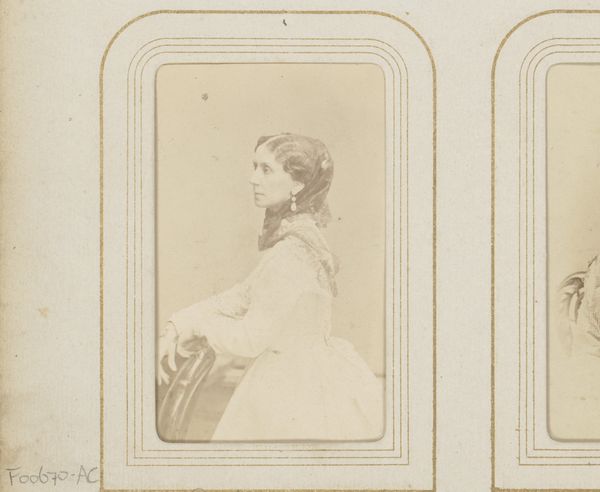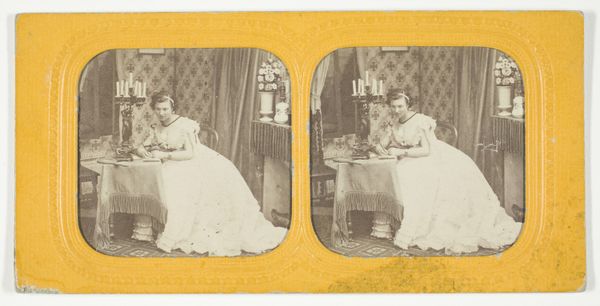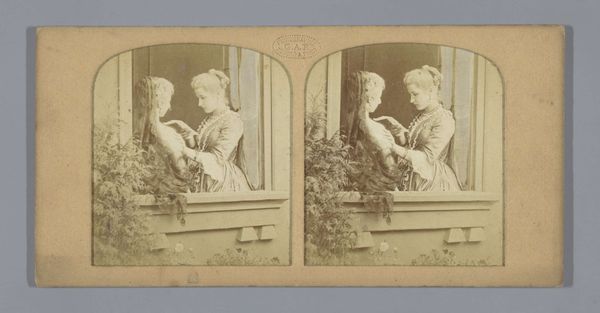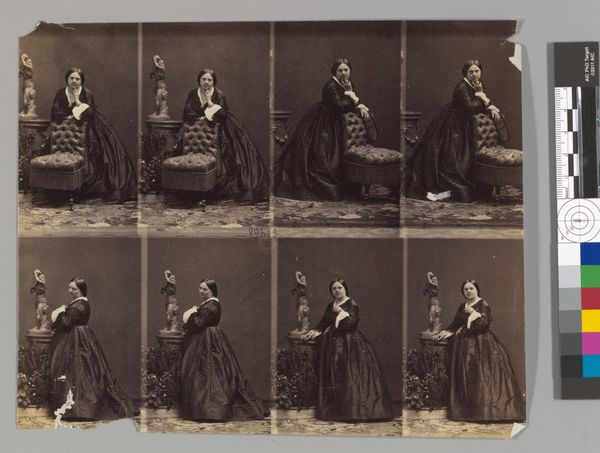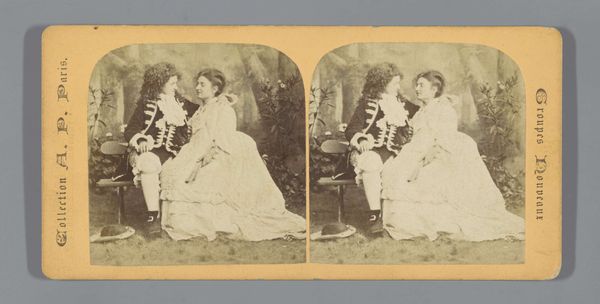
Dimensions: height 86 mm, width 177 mm
Copyright: Rijks Museum: Open Domain
Editor: Here we have Anatole Pougnet's "Slapende vrouw in stoel met boek op schoot", or "Sleeping woman in chair with book in her lap," an albumen print believed to have been made sometime between 1855 and 1870. There's a stillness about this image, a quiet domesticity. What strikes you most when you look at it? Curator: It whispers stories, doesn't it? I'm immediately drawn to the fabric—the way the light catches the sheen of her gown. It makes me think of Vermeer, of quiet interiors and the weight of untold narratives. And yet, it's photography. Consider what it meant to stage such a scene then—the time, the resources. Was this woman truly asleep, or was she enacting a pose of Romantic weariness, à la Madame Bovary? Does it look natural to you? Editor: I see what you mean. The staging feels… deliberate. Maybe too deliberate to be completely natural. I guess it speaks to how photography was still finding its footing as an art form, still influenced by painting. Curator: Precisely. And the double image! It's a stereograph, meant to be viewed with a special device to create a 3-D effect. How strange to think of Victorian viewers leaning in, peering into this woman’s private, perhaps performative, slumber. Photography freezes the past, but it doesn't tell the whole truth, does it? It merely offers a glimpse and asks more questions than it answers. Editor: So true! It's like peeking through a keyhole, you only get a partial view. This piece really makes me think about how we interpret images and the stories we project onto them. Curator: Agreed! It serves as a poetic prompt to question, interpret, and feel the pulse of another time, captured in silver and light. I wonder what stories she dreamt?
Comments
No comments
Be the first to comment and join the conversation on the ultimate creative platform.
